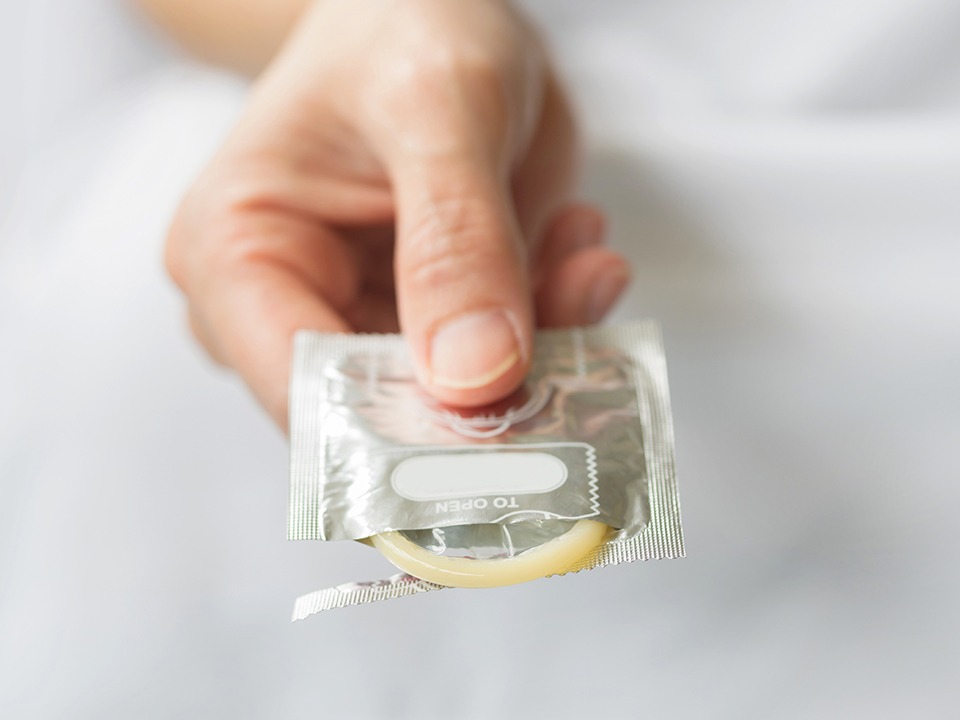1
Does using more condoms affect pregnancy?
Condoms generally do not affect pregnancy
In general, condoms do not affect pregnancy. Condoms are mainly to achieve the effect of contraception by blocking men's sperm from entering the female body, which basically has no effect on the body, so young couples who do not want a baby for the time being can use condoms with confidence.
2
Does using more condoms affect pregnancy - the benefits of wearing condoms
1. Contraceptive
The main role of the condom is to prevent the man's semen from entering the female body, so as to achieve the role of contraception.
2. Prevent semen allergy symptoms
Some women experience vulvar itching, edema, chest tightness, shortness of breath and even urticaria-like symptoms after sexual intercourse, and condoms prevent semen contact and relieve semen allergy.
3. Prevent infectious diseases
Proper use of condoms reduces the probability of contracting AIDS by 99.9% and the probability of contracting gonorrhea by 85%.
4. Lubrication
Condoms can also play a lubricating role, this is because when they are in use, there will be some lubricating oil on their surfaces, and naturally in sexual life, there will be natural lubrication.
5. Extend the duration of sex
Locally thickened physical delay condom condoms can prolong sexual intercourse time, and prolonged sexual intercourse time by more than 20% for men with premature ejaculation can treat premature ejaculation; It takes longer for women to reach orgasm than men, making women's sexiness satisfied.

3
Does using more condoms affect pregnancy - common methods of contraception
1. Contraceptives
Tablets or injections made from synthetic estrogen and progesterone can play a role in suppressing ovulation. It is not conducive to the implantation of pregnant eggs, and it is not conducive to the role of sperm through the mucus of the cervical canal. There are short-acting oral tablets and long-acting injections.
2. Vaginal diaphragm
Also known as the uterine cap, it is a latex film with a ring of wire springs that covers the cervix and prevents sperm and egg from meeting. The size of the uterine cap varies and needs to be matched by the doctor. If used correctly, the effect is reliable.
3. Contraceptive film
It is a kind of vaginal drug containing spermicidal drugs, which dissolves quickly after being placed in the vagina, and the drug is evenly distributed in the vagina and cervix for 10 minutes before sexual intercourse. This method has good effect and does not affect endocrine changes.
4. IUD
It is customary to call the contraceptive ring and achieve a contraceptive effect through local action on the uterine cavity. Its method is safe and effective and is one of the most important contraceptive methods at present.
4
Does using a large number of condoms affect pregnancy - what are the reasons for affecting pregnancy?
1. Congenital factors
People whose congenital reproductive system is not fully developed often have primary amenorrhea. Abnormal sex chromosomes, such as true and false hermaphrodites, can also lead to habitual miscarriage.
2. Vaginal factors
Vaginal atresia, or vaginal septum, is an obstacle to sexual intercourse and prevents semen from flowing into the vagina for insemination.
3. Uterine factors
A well-developed or maldeveloped uterus, such as a congenital uterus, a naïve uterus, or a solid uterus without a uterine cavity, can affect a woman's fertility.
4. Ovarian factor
No healthy development of follicles in the ovaries, ovarian tumors, premature ovarian failure, difficulty in releasing eggs and forming the corpus luteum, polycystic ovaries, etc. will affect the development of follicles, which may lead to infertility.
5. Fallopian tube factor
Tubal lengths that are too long or too narrow, and lumen occlusion, sufficiency or adhesions caused by inflammation of the fallopian tubes can cause problems with the movement of sperm, eggs, or fertilized eggs.
6. Endocrine factors
The hypothalamus is not fully developed, unhealthy, or matures later in the hypothalamic cycle center, resulting in deficiencies in the regulation of the hypothalamic-pituitary-ovarian axis. This can lead to anovulation, amenorrhea, or luteal dysfunction during menstrual leave, which can also lead to infertility.
Leave a comment
Please consciously abide by the policies and regulations related to the Internet, and strictly prohibit the publication of pornographic, violent and reactionary remarks.










